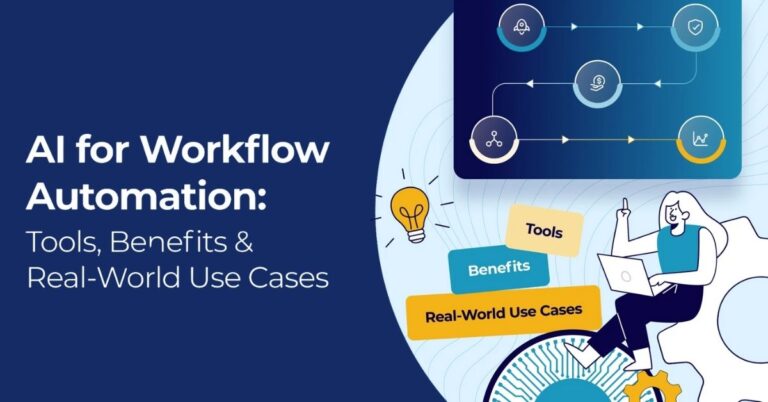The Role of Automation in Mitigating Risk and Compliance Challenges in Finance
The Role of Automation in Mitigating Risk and Compliance Challenges in Finance
In the ever-evolving landscape of the financial industry, risk and compliance management have become critical components for ensuring the stability and integrity of financial institutions. The complexity and volume of regulations, coupled with the potential consequences of non-compliance, make it imperative for organizations to find efficient and effective ways to manage risk and maintain compliance.
The Challenges of Risk and Compliance in Finance
Financial institutions face numerous challenges when it comes to risk and compliance management. These challenges include:
- Increasing Regulatory Complexity: The financial industry is subject to a myriad of regulations from various governing bodies. Staying up-to-date with these regulations and ensuring compliance can be a daunting task.
- Data Overload: Financial institutions generate and process vast amounts of data on a daily basis. Extracting relevant information and identifying potential risks within this data can be time-consuming and prone to human error.
- Manual Processes: Many risk and compliance tasks are still performed manually, leading to inefficiencies, delays, and increased risk of errors.
- Cost and Resource Constraints: Allocating sufficient resources and budgets for risk and compliance management can be challenging, especially for smaller financial institutions.
The Benefits of Automation in Risk and Compliance Management
Automation can play a crucial role in mitigating risk and compliance challenges in the finance industry. By leveraging technology and advanced analytics, financial institutions can streamline their risk and compliance processes, improve accuracy, and reduce costs. Here are some key benefits of automation:
1. Enhanced Efficiency and Accuracy
Automation eliminates manual and repetitive tasks, allowing risk and compliance professionals to focus on more strategic activities. By automating data collection, analysis, and reporting, financial institutions can significantly reduce the risk of errors and improve the accuracy of their risk assessments and compliance monitoring.
2. Real-time Monitoring and Alerts
Automation enables real-time monitoring of transactions, activities, and market conditions. By setting up automated alerts and triggers, financial institutions can quickly identify and respond to potential risks and compliance issues. This proactive approach helps prevent violations and allows for timely corrective actions.
3. Improved Regulatory Compliance
Automation helps financial institutions stay up-to-date with the ever-changing regulatory landscape. By automating compliance checks and reporting, organizations can ensure that they are meeting regulatory requirements and avoiding penalties. Automation also provides an audit trail, making it easier to demonstrate compliance during regulatory examinations.
4. Data-driven Decision Making
Automation enables financial institutions to leverage advanced analytics and data visualization tools to gain deeper insights into their risk and compliance profiles. By analyzing large volumes of data in real-time, organizations can identify patterns, trends, and potential risks more effectively. This data-driven approach enhances decision-making and enables proactive risk management.
5. Cost Reduction
Automation can help financial institutions reduce costs associated with risk and compliance management. By eliminating manual processes and reducing the need for human intervention, organizations can achieve greater operational efficiency. Automation also minimizes the risk of fines, penalties, and reputational damage resulting from non-compliance.
Implementing Automation in Risk and Compliance Management
While the benefits of automation in risk and compliance management are clear, implementing automation requires careful planning and consideration. Here are some key steps to consider:
1. Assess Current Processes and Identify Automation Opportunities
Start by assessing your current risk and compliance processes to identify areas that can be automated. Look for tasks that are repetitive, time-consuming, and prone to human error. These are the areas where automation can have the greatest impact.
2. Select the Right Automation Tools and Technologies
Choose automation tools and technologies that align with your organization’s specific needs and requirements. Consider factors such as scalability, integration capabilities, data security, and ease of use. Collaborate with IT and risk management teams to ensure a smooth implementation.
3. Develop a Comprehensive Automation Strategy
Create a detailed plan for implementing automation in your risk and compliance processes. Define clear objectives, timelines, and key performance indicators (KPIs) to measure the success of your automation initiatives. Involve all relevant stakeholders and ensure proper training and support for employees.
4. Monitor and Evaluate the Effectiveness of Automation
Regularly monitor and evaluate the effectiveness of your automated risk and compliance processes. Collect feedback from users and stakeholders to identify any areas for improvement. Continuously update and refine your automation strategy to adapt to changing regulatory requirements and emerging risks.
Conclusion
Automation has the potential to revolutionize risk and compliance management in the finance industry. By leveraging technology and advanced analytics, financial institutions can enhance efficiency, improve accuracy, and reduce costs. However, successful implementation requires careful planning, collaboration, and ongoing evaluation. Embracing automation can help financial institutions navigate the complex regulatory landscape and ensure long-term stability and success.
